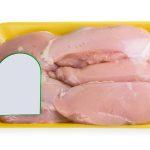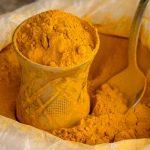Pretzels are a popular snack loved by many. However, over time, pretzels can become hard and stale, which can make them less enjoyable to eat. This is due to the loss of moisture and exposure to air, which can cause the pretzels to lose their texture and become tough.
It’s important to know how to soften hard pretzels because it can save you from wasting money by throwing away stale pretzels and also help you enjoy your pretzels to the fullest.
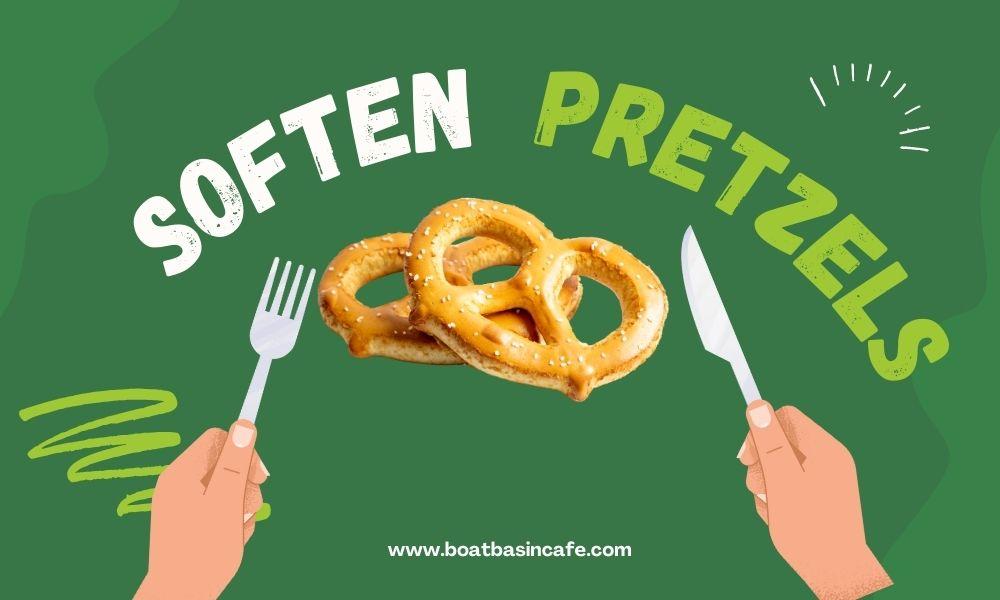
In this article, we’ll share some effective methods to soften hard pretzels, so you can savor their flavor and texture for longer.
Brief history and origins of pretzels
The origin of pretzels is somewhat uncertain, but it is believed that monks first created them in the early Middle Ages. Legend has it that around 610 A.D., an Italian monk invented the pretzel to reward children who learned their prayers. The twisted shape of the pretzel was meant to resemble arms crossed in prayer.
Another theory is that pretzels originated in Germany, where they were called “bretzel.” They were traditionally eaten during Lent as a replacement for bread, which was not allowed during fasting.
Regardless of their origins, pretzels have become a beloved snack worldwide. They can be enjoyed in various forms, from soft and chewy to hard and crunchy. In recent years, pretzels have also become popular in many dishes, from sandwiches to desserts.
Types of pretzels and their texture variations
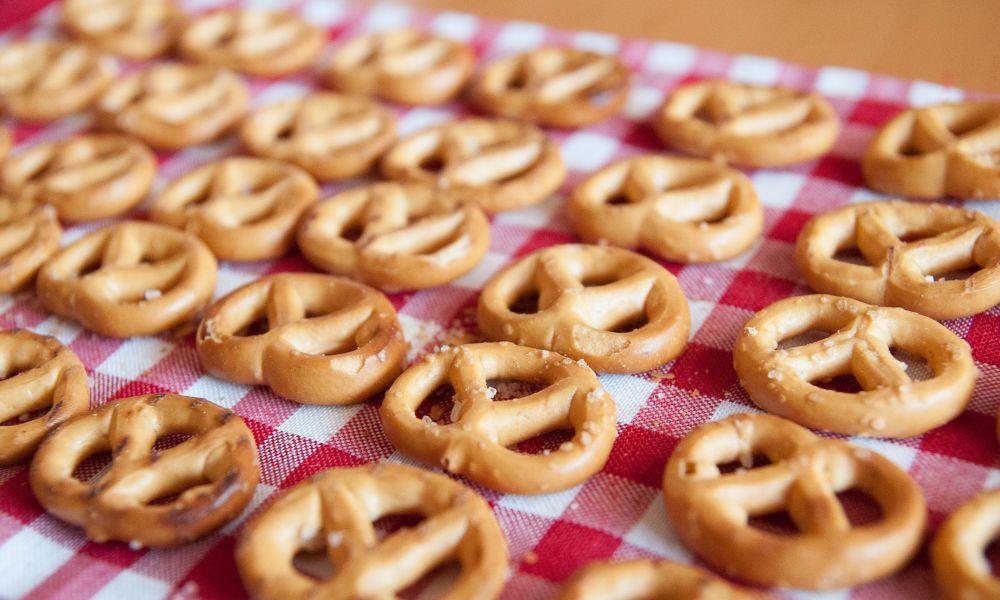
Pretzels come in a variety of shapes, sizes, and textures. Here are some common types of pretzels and their texture variations:
Soft Pretzels
Soft pretzels are a popular type of pretzel that has a chewy texture. They are often found at sporting events, amusement parks, and malls. Soft pretzels are made with a dough that is boiled in water and then baked, which gives them their signature chewy texture.
Hard Pretzels
Hard pretzels are another popular type of pretzel that has a crunchy texture. They are often found in snack aisles at grocery stores and are commonly enjoyed with dips and spreads. Hard pretzels are made with a similar dough as soft pretzels, but they are baked at a lower temperature for a longer period of time, which removes most of their moisture and gives them their crispy texture.
Pretzel Sticks
Pretzel sticks are a thinner version of the classic pretzel shape. They can come in either soft or hard textures, depending on how they are prepared.
Pretzel Bites – Pretzel bites are small, bite-sized pieces of pretzel dough typically served as an appetizer or snack. They can come in either soft or hard textures, depending on how they are prepared.
Flavored Pretzels
In addition to the classic salted pretzel, a variety of flavored pretzels are available, such as garlic, cinnamon sugar, and cheese. These variations can come in both soft and hard textures.
Overall, the texture of pretzels can vary based on the type of dough used, the cooking method, and the flavorings added. Whether you prefer a soft, chewy texture or a crispy, crunchy texture, there is a pretzel for everyone to enjoy.
Common ingredients in pretzels and how they affect texture

Pretzels are typically made with basic ingredients, including flour, water, yeast, salt, and sometimes sugar. Each ingredient plays a role in the texture and flavor of the final product. Here’s a breakdown of how these common ingredients affect the texture of pretzels:
Flour
The type of flour used can affect the texture of the pretzel. Bread flour, which has a higher protein content than all-purpose flour, is commonly used in pretzel dough. The high protein content creates gluten, which gives the pretzel dough its elasticity and chewy texture.
Water
Water is used to hydrate the flour and activate the yeast. The amount of water used can affect the texture of the pretzel. A wetter dough will result in a softer, chewier pretzel, while a drier dough will result in a harder, crunchier pretzel.
Yeast
Yeast is used to helping the dough rise, which creates air pockets and a lighter texture. Depending on the recipe, different types of yeast can be used, such as instant yeast or active dry yeast.
Salt
Salt is an important ingredient in pretzels, as it contributes to flavor and texture. A small amount of salt is typically added to the dough, and larger salt crystals are often sprinkled on top of the pretzel. The salt crystals on top can provide a crunchy texture that contrasts with the soft interior of the pretzel.
Sugar
Sugar is sometimes added to the dough to provide a slightly sweet flavor and to help the yeast activate. Too much sugar, however, can make the pretzel dough too soft and affect the texture.
Overall, the ingredients used in pretzels work together to create the desired texture and flavor. The balance of these ingredients is crucial in producing a pretzel with the right amount of chewiness, crunchiness, and saltiness.
Common reasons for pretzels becoming hard
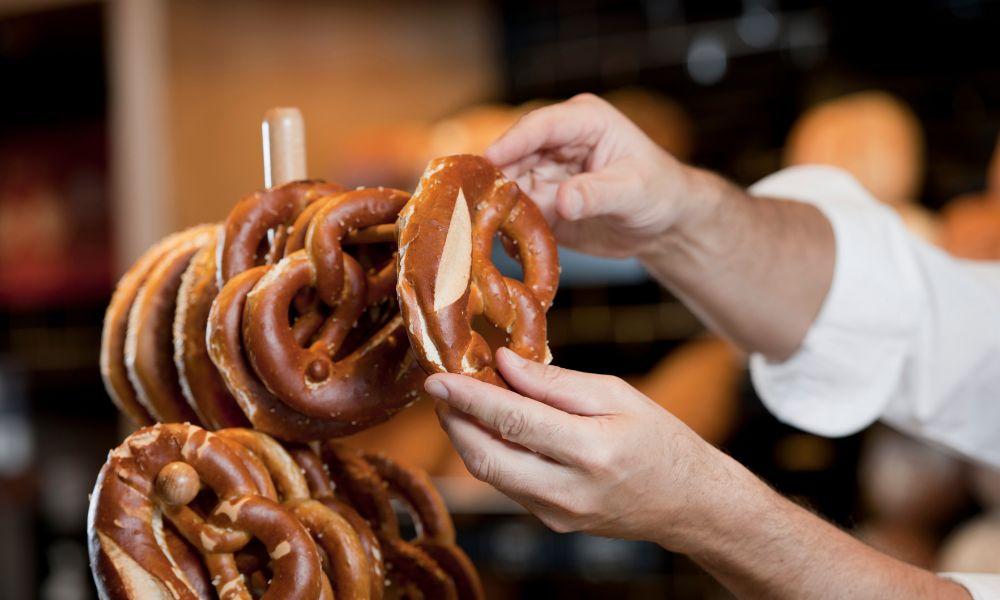
Exposure to air
When pretzels are exposed to air, they lose moisture, which can cause them to become stiff and dry.
Time
As pretzels age, they lose moisture and become less soft and chewy.
Improper storage
If pretzels are not stored properly, they can become stale and hard. Pretzels should be stored in an airtight container or resealable plastic bag to prevent air from getting in.
Humidity
If pretzels are stored in a humid environment, they can absorb moisture and become soft and chewy. However, they can become mushy and lose their texture if exposed to high humidity for too long.
Overbaking
If homemade pretzels are baked too long or at too high a temperature, they can become hard and crunchy.
It’s important to note that some pretzels are meant to be hard and crunchy, such as hard pretzels. However, if you prefer a soft and chewy texture, it’s important to store your pretzels properly and consume them within a reasonable time to ensure they stay fresh.
How to Soften Hard Pretzels
If you have hard pretzels that you want to soften, don’t worry! You can use several effective techniques to bring your pretzels back to life. Here are some techniques for softening pretzels based on different tools and ingredients:
Using Steam
Using steam is a great way to soften hard pretzels because it helps rehydrate them and make them soft and chewy. When steam is applied to the surface of the pretzels, it penetrates the outer layer and adds moisture to the interior. This moisture helps to loosen the tight gluten structure in the pretzels, making them hard and crunchy. By softening the gluten structure, the pretzels become more pliable and chewy.
Additionally, the heat from the steam helps warm up the pretzels, contributing to their softness. Using steam to soften your pretzels, you can achieve a texture similar to freshly baked pretzels, with a soft, chewy interior and slightly crispy exterior.
👩🍳 Equipment needed
A baking sheet – This will be used to place the pretzels on.
A large pot or wok with a lid – This will be used to create the steam. The pot should be big enough to fit a steaming basket or colander inside.
A steaming basket or colander – This will be used to hold the pretzels while they are being steamed. Ensure the basket is large enough to have all the pretzels you want to steam.
Oven mitts – These will be used to handle the hot pot and baking sheet.
Tongs or a spatula will transfer the pretzels from the baking sheet to the steaming basket and back again.
With these basic tools, you can easily create steam and use it to soften your hard pretzels. You can use a colander or metal strainer if you don’t have a steaming basket. Make sure that whatever you use can handle the heat and is large enough to hold the pretzels.
🥨 Step-by-step Guide
- Preheat your oven to 350°F (175°C).
- Place your hard pretzels on a baking sheet and bake them in the oven for about five minutes. This will help to warm them up and prepare them for steaming.
- While the pretzels are warming up, fill a large pot or wok with about an inch of water. Bring the water to a boil over high heat.
- Place a steaming basket or colander in the pot, making sure it’s not touching the water.
- Transfer the pretzels from the baking sheet to the steaming basket using tongs or a spatula.
- Cover the pot with a lid and let the pretzels steam for 2-3 minutes.
- Remove the pretzels from the pot and transfer them to the baking sheet.
- Bake the pretzels in the oven for another 2-3 minutes to dry them.
- Remove the pretzels from the oven and let them cool for a few minutes before serving.
💡Tips and tricks for best results
Don’t overcrowd the steaming basket or colander. Leave enough space between the pretzels so that the steam can circulate evenly.
Make sure the pot or wok has enough water to create steam. If the water runs out, add hot water to keep the steam going.
Use a larger pot or wok to create more steam if you have many pretzels to soften.
Add flavor to your pretzels by brushing them with melted butter or sprinkling them with garlic powder, onion powder, or grated Parmesan cheese before steaming.
If your pretzels are very hard, soak them in warm water for a few minutes before steaming. This will help to rehydrate them more quickly.
For a softer pretzel, steam them for a longer period. If you prefer a chewier pretzel, steam them for a shorter period.
Using a Microwave
Using a microwave is another effective technique to soften hard pretzels. When using a microwave, the heat causes the moisture inside the pretzel to turn into steam. The steam then penetrates the hard outer layer of the pretzel, rehydrating it and making it soft and chewy again.
Microwaves work by creating electromagnetic waves that cause water molecules in the food to vibrate rapidly, producing heat. This is why microwaves are so effective at heating and cooking food quickly. In the case of pretzels, microwaves help rehydrate the pretzels and make them soft by heating the moisture inside the pretzel.
👩🍳 Equipment needed
A microwave-safe plate – This will be used to place the pretzels on.
A damp paper towel – This will be placed over the pretzels to create steam and help rehydrate them.
That’s it! You can effectively soften hard pretzels with just these two basic items in just a few seconds.
🥨 Step-by-step guide
- Place the hard pretzels on a microwave-safe plate.
- Wet a paper towel and wring it out until it’s damp.
- Cover the pretzels with a damp paper towel. Make sure the paper towel is not too wet, as this can make the pretzels soggy.
- Microwave the pretzels for about 20-30 seconds on high power.
- Remove the plate from the microwave and check the pretzels to see if they are soft enough. If they are still hard, microwave them for another 10-15 seconds.
- Repeat this process until the pretzels are soft and chewy.
💡Tips and tricks for best results
If your microwave has a defrost setting, use it instead of the regular power setting. The defrost setting is gentler and will help prevent the pretzels from becoming too soft or soggy.
If your pretzels are particularly large or thick, you may need to microwave them for a longer period to ensure they are evenly heated.
Always start with a lower power setting when microwaving pretzels. This will help prevent the pretzels from becoming too hot or overcooked.
Be sure to let the pretzels cool for a few minutes after microwaving them. This will help them firm up and prevent becoming too soft or mushy.
If you have leftover pretzels that have been microwaved, store them in an airtight container or bag. This will help to keep them fresh and prevent them from becoming stale.
Using an Oven
An oven can also be used to soften hard pretzels. The heat from the oven helps to evaporate any moisture lost from the pretzels, causing them to become dry and hard. Using an oven, you can effectively rehydrate the pretzels and make them soft and chewy.
👩🍳 Equipment needed
Aluminum foil – This will be used to wrap the hard pretzels to help rehydrate them.
Baking sheet – This will be used to place the aluminum-wrapped pretzels on.
That’s all you need! With these two basic items, you can effectively soften hard pretzels and make them soft and chewy again.
🥨 Step-by-step guide
- Preheat your oven to 350°F (175°C).
- Wrap the hard pretzels in aluminum foil to help retain moisture.
- Place the aluminum-wrapped pretzels on a baking sheet.
- Bake the pretzels for 5-10 minutes or until they are heated through and soft. Be sure to check them frequently to prevent overcooking.
- Remove the pretzels from the oven and allow them to cool for a few minutes before unwrapping them.
💡Tips and tricks for best results
Use the lowest possible temperature setting. This will help to prevent the pretzels from overcooking or becoming too soft.
If your pretzels are particularly large or thick, you may need to bake them longer to ensure they are evenly heated.
Be sure to check the pretzels frequently to prevent overcooking. Pretzels can become too soft or lose their texture if left in the oven for too long.
If you have many pretzels to soften, use multiple baking sheets or bake them in batches to ensure they all get evenly heated.
To add flavor to your pretzels, brush them with melted butter or sprinkle them with cinnamon sugar or grated Parmesan cheese before wrapping them in aluminum foil.
If you want to make the pretzels extra soft, brush them with warm water or milk before wrapping them in aluminum foil.
Using a Wet Towel
Another simple method for softening hard pretzels is to use a wet towel. The towel moisture helps rehydrate the pretzels, making them soft and chewy again.
👩🍳 Equipment needed
Clean kitchen towel – This will be used to wrap the hard pretzels.
Warm water – This will be used to dampen the kitchen towel.
A plastic bag or airtight container – This will be used to store the towel-wrapped pretzels while they soften.
🥨 Step-by-step guide
- Dampen a clean kitchen towel with warm water.
- Wrap the hard pretzels in a damp towel.
- Place the towel-wrapped pretzels in a plastic bag or airtight container.
- Allow the pretzels to sit at room temperature for several hours or overnight until they are softened to your desired texture.
💡Tips and tricks for best results
Use a clean kitchen towel to avoid any unwanted odors or flavors from transferring to the pretzels.
If your pretzels are particularly hard or stale, you may need to repeat the process multiple times to achieve the desired texture.
If you’re in a hurry, you can speed up the process using hot or boiling water to dampen the towel. However, be careful not to burn yourself.
To prevent the towel from drying out too quickly, you can place the plastic bag or airtight container in a cool, dark place while the pretzels are softening.
Additional ingredients that can be added to improve texture and flavor
While the techniques we’ve discussed so far can effectively soften hard pretzels, you can also enhance their texture and flavor by adding additional ingredients. Here are some ingredients you can use to improve the texture and taste of your pretzels:
Water – Adding a small amount of warm water to the pretzels can help rehydrate and make them softer.
Butter – Brushing melted butter onto the pretzels before heating them can add richness and flavor.
Cinnamon sugar – Sprinkling cinnamon sugar onto the pretzels before heating them can add sweetness and a hint of spice.
Cheese – Grating Parmesan cheese onto the pretzels before heating them can add a savory, umami flavor.
Mustard – Dipping the pretzels into a small amount of mustard after they’ve been heated can add tanginess and a bit of heat.
By experimenting with different ingredients, you can customize the flavor and texture of your softened pretzels to your liking. Just be careful not to add too much of any one ingredient, as this can overpower the flavor of the pretzels.
How to store pretzels to prevent them from becoming hard

To prevent your pretzels from becoming hard in the first place, it’s important to store them properly. Here are some tips on how to store pretzels to help keep them fresh and soft:
Keep them in an airtight container – Whether your pretzels are store-bought or homemade, keeping them in an airtight container can help to prevent them from becoming hard. This will help to keep out any moisture and prevent them from getting stale.
Store them at room temperature – Avoid storing your pretzels in the fridge, as this can cause them to become harder more quickly. Instead, store them at room temperature in a cool, dry place.
Don’t open the container too often – Every time you open the container, you’re letting in air and moisture, which can cause the pretzels to become hard more quickly. Try to open the container only when necessary.
Use a bread box – If you have a lot of pretzels to store, using a bread box can be a great option. Bread boxes help to regulate the temperature and humidity, which can help to keep your pretzels fresh and soft for longer.
How to revive stale pretzels that cannot be softened
If your pretzels are stale and cannot be softened using the techniques we’ve discussed, there are still some ways to revive them and make them enjoyable to eat. Here are a few methods to try:
Toast them – Toasting stale pretzels in the oven or a toaster oven can help to bring out their flavor and add a bit of crispiness. Be careful not to burn them, which can make them taste bitter.
Make croutons – If your pretzels are too stale to eat, you can turn them into croutons for salads or soups. Simply cut them into small pieces, toss them with olive oil and spices, and bake them in the oven until they’re crispy.
Make breadcrumbs – Another way to use stale pretzels is to turn them into breadcrumbs. Simply pulse them in a food processor until they’re finely ground, and use them instead of regular breadcrumbs in recipes.
Grind them into a crust – If you’re making a dessert or savory dish that calls for a pretzel crust, you can use stale pretzels instead of fresh ones. Grind them into a fine powder, mix them with melted butter and sugar or salt, and press the mixture into a pie or tart pan.
FAQs
What are the best types of pretzels to soften?
Generally, any pretzel can be softened using the techniques we’ve discussed. However, soft pretzels and pretzel rolls tend to be more forgiving than hard pretzels and may be easier to soften.
Can soft pretzels be re-softened if they become hard?
Yes, soft pretzels can be re-softened using the same techniques as hard pretzels. However, they may require less time or a gentler method to avoid over-softening them.
How long will it take to soften hard pretzels using each technique?
The amount of time it takes to soften hard pretzels using each technique will vary depending on the thickness and hardness of the pretzels and the method used. Generally, achieving the desired texture can take a few minutes to several hours or overnight.
Can you use multiple techniques to soften hard pretzels?
Yes, you can use multiple techniques to soften hard pretzels if one method is not enough. For example, you could start using a wet towel and then finish with a quick steam or microwave to achieve the desired texture.
How can you tell if a pretzel is too hard to be softened?
If a pretzel is extremely hard and brittle, it may be too far gone to be softened using any methods we’ve discussed. Additionally, if the pretzel has a stale or rancid odor, it may not be safe to eat, even if it can be softened.



